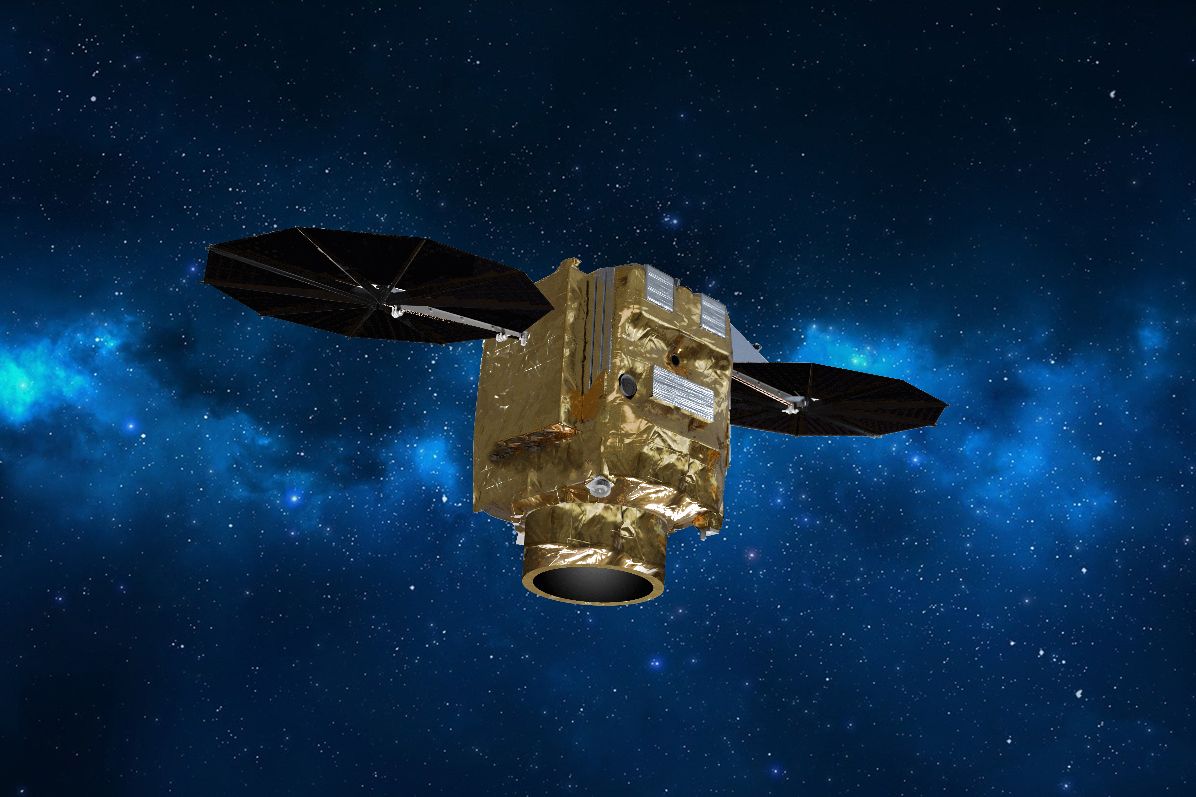Vega rocket returns to flight with Europe's most advanced Earth observation satellite yet
Europe's Vega rocket is back in action!
Europe's Vega rocket returned to flight late Wednesday (April 28), delivering to orbit Europe's most advanced Earth observation satellite to date.
The mission by the European launch provider Arianespace lifted off from the Guiana Space Center near Kourou, French Guiana, at 9:50 p.m EDT (0150 April 29 GMT), carrying the Pléiades Neo 3 Earth observation satellite and five small "rideshare" payloads. It was the first Vega launch since November, when a failure of its Avum upper stage resulted in a loss of two Earth observation satellites.
The Wednesday launch, Vega's 18th overall, marked the second occasion the light rocket flew the small satellite dispenser SSMS (Small Spacecraft Mission Service), designed to answer the growing need for ridesharing services for small satellites.
In addition to the 900-kilogram (2,000 lbs.) Pléiades Neo 3, the rocket delivered to orbit five secondary satellites, including Norwegian experimental navigation radar detector NorSat-3, Eutelsat's telecommunication Tyvak-182A 6U cubesat, and two Spire Lemur-2 satellites for maritime and aviation tracking.
Journey to orbit

The reignitable Avum upper stage, carrying the SSMS with the six satellites, separated from the rocket six minutes and 33 seconds after liftoff and fired its liquid fuel engine to bring the payloads into the correct orbits. The first burn of the Avum upper stage lasted almost eight minutes, followed by a nearly 37-minute ballistic phase and an 80-second burn.
At 54 minutes after liftoff, having reached an altitude of about 385 miles (620 kilometers), Avum deployed the Pléiades Neo 3 satellite, which will orbit the planet in a sun-synchronous polar orbit, revisiting each spot on Earth at the same time.
The Avum upper stage subsequently performed further two burns lasting four seconds and seven seconds prior to the release of the five secondary payloads, at the altitude of 380 miles (613 km). The final orbital insertion was completed successfully about one hour and 40 minutes after liftoff.
Get the Space.com Newsletter
Breaking space news, the latest updates on rocket launches, skywatching events and more!
Europe's sharpest eye on Earth

The primary payload, Pléiades Neo 3, is the first satellite of a four-spacecraft constellation built and operated by European aerospace giant Airbus Defence and Space. Offering a 30-centimeter (12 inches) resolution, the Pléiades Neo constellation will be the most advanced Earth observation service in Europe.
Pléiades Neo satellites can also link up with the "SpaceDataHighway" network of geostationary satellites (also known as the European Data Relay System) "to enable urgent acquisitions just 30 to 40 minutes following the tasking request to swiftly respond to the most critical situations," Airbus officials said in a statement.
"Pléiades Neo is a game changer for Airbus and its geo-intelligence customers," Jean-Marc Nasr, head of Space Systems at Airbus, said in the statement. "We can offer a state of the art constellation delivering 30cm resolution imagery in near real-time, opening up a completely new range of applications to give our customers more detail, more quickly."
Faulty cables
An investigation into the November 2020 Vega launch failure found the Avum upper stage tumbled out of control after separation because of improperly attached cables. The failed launch was preceded by one successful flight in September 2020, which followed another failure in July 2019.
Back then, what Arianespace described as a "major failure" destroyed the United Arab Emirates' Falcon Eye 1 Earth observation satellite barely two minutes after lift-off. The mishap was later attributed to a faulty motor of the rocket's second stage. Prior to that, Vega executed 14 successful flights, including its debut mission in February 2012.
With the success of Wednesday's return-to-flight mission, Arianespace and its Vega rocket are on track to launch another Pléiades Neo satellite this year, and the company expects to use Vega to complete the four-satellite constellation in 2022.
If you have a pitch, email Tereza on tpultarova@space.com or follow her on Twitter @TerezaPultarova Follow us on Twitter @Spacedotcom and on Facebook.
Join our Space Forums to keep talking space on the latest missions, night sky and more! And if you have a news tip, correction or comment, let us know at: community@space.com.

Tereza is a London-based science and technology journalist, aspiring fiction writer and amateur gymnast. Originally from Prague, the Czech Republic, she spent the first seven years of her career working as a reporter, script-writer and presenter for various TV programmes of the Czech Public Service Television. She later took a career break to pursue further education and added a Master's in Science from the International Space University, France, to her Bachelor's in Journalism and Master's in Cultural Anthropology from Prague's Charles University. She worked as a reporter at the Engineering and Technology magazine, freelanced for a range of publications including Live Science, Space.com, Professional Engineering, Via Satellite and Space News and served as a maternity cover science editor at the European Space Agency.









